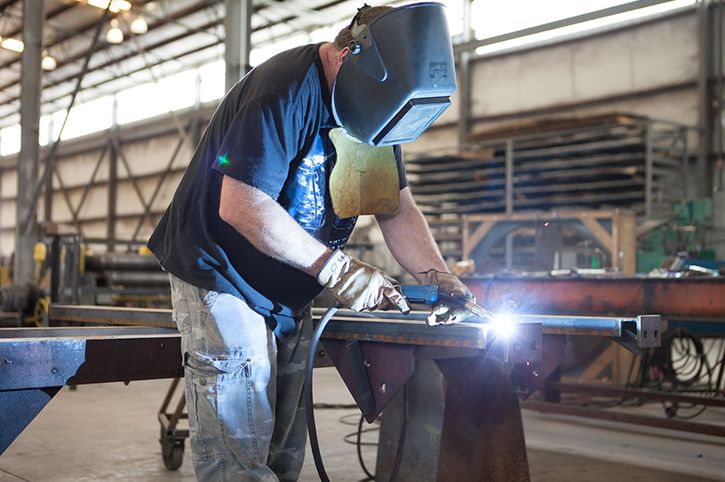Producing a Welding WPS: Step-by-Step Recommendations for Professionals
Producing a Welding WPS: Step-by-Step Recommendations for Professionals
Blog Article
The Ultimate Guide to Welding WPS Procedures: An Extensive Review for Welders
In the complex globe of welding, Welding Treatment Specifications (WPS) serve as the foundation of making sure high quality, uniformity, and security in welding procedures (welding WPS). As we dig into the different components of a WPS and explore the intricacies of qualification and qualification, we will uncover the essential role these treatments play in the realm of welding.
Importance of WPS Procedures
Comprehending the significance of Welding Treatment Specs (WPS) treatments is vital for guaranteeing the quality and stability of bonded structures. WPS treatments offer as a roadmap for welders, laying out the necessary actions, specifications, and products required to accomplish a sound weld. By adhering to WPS standards, welders can ensure uniformity in their work, leading to reliable and structurally audio welds.
One of the primary reasons why WPS procedures are necessary is their function in preserving weld top quality and integrity. Following the specified welding specifications and strategies outlined in the WPS helps stop issues such as porosity, cracking, or incomplete blend, which can endanger the strength and sturdiness of the weld.

Elements of a WPS
A Welding Treatment Spec (WPS) usually consists of necessary elements that detail the particular demands for executing a weld, making certain uniformity and quality in the welding process. The vital elements of a WPS consist of crucial variables such as base metals, filler steels, interpass and preheat temperatures, welding processes, shielding gases, welding placements, and post-weld warm therapy requirements.
Base steels refer to the materials being signed up with, while filler steels are made use of to load the space between the base steels throughout welding. Preheat and interpass temperatures are vital for controlling the warm input and preventing concerns like cracking or distortion. The welding process lays out the specific technique to be used, whether it's gas metal arc welding (GMAW), secured steel arc welding (SMAW), or an additional approach. Shielding gases protect the weld pool from climatic contamination. Welding placements specify the positionings in which welding can be done. Post-weld warm treatment may be required to alleviate stress and anxieties and boost the weld's residential properties. A comprehensive understanding of these parts is essential for producing a comprehensive and efficient WPS.

Certification and Certification
Having actually established the essential parts of a Welding Treatment Requirements (WPS), the focus now shifts in the direction of the vital facets of qualification and qualification in welding techniques.

Accreditation, on the other hand, is the official acknowledgment of a welder's certifications by a pertinent accreditation body or company. Welding accreditations are generally based upon the certain welding processes, products, and positions a welder is qualified to deal with. Holding a valid welding accreditation shows that a welder meets industry requirements and is qualified to carry out welding jobs to the called for specifications.
Creating a WPS
To establish a Welding Treatment Specification (WPS) that meets sector Continued standards, cautious factor to consider of welding processes, products, and functional parameters is vital (welding WPS). The initial step in developing a WPS is to determine the welding process to be made use of, such as gas steel arc welding (GMAW) or shielded metal arc welding (SMAW) When the welding procedure is figured out, the following critical aspect is choosing the suitable products, taking into consideration variables like base metal type, density, and joint design. Operational parameters such as welding current, voltage, travel rate, and shielding gas make-up have to also be carefully defined in the WPS.

Applying and Monitoring WPS
Upon finalizing the detailed Welding Procedure Requirements (WPS) that thoroughly information welding processes, materials, functional specifications, and top quality assurance steps, the emphasis shifts to efficiently carrying out and checking the well established treatments. Execution involves ensuring that all welders involved in the task are familiar with the WPS and follow it diligently throughout the navigate to these guys welding procedure. Efficient application and monitoring of the WPS are important for guaranteeing the honesty, stamina, and security of the bonded joints, inevitably adding to the overall success of the welding project.
Verdict
To conclude, understanding and complying with Welding Procedure Specs (WPS) is crucial for welders to make certain high quality, consistency, and security in their work. By understanding the elements of a WPS, obtaining appropriate certifications and qualifications, developing in-depth treatments, and executing and monitoring them successfully, welders can improve their skills and efficiency in welding techniques. Abiding by WPS treatments is necessary for producing top quality welds and conference sector criteria.
In the complex globe of welding, Welding Procedure Specs (WPS) offer as the backbone of ensuring high quality, consistency, and safety and security in welding operations. The welding process lays out the details strategy to be utilized, whether it's gas steel arc welding (GMAW), secured metal arc welding (SMAW), or another technique.To develop a Welding Treatment Spec (WPS) that meets industry criteria, cautious consideration of welding processes, products, and operational criteria is vital. The first step in creating a WPS is to identify the welding process to be utilized, such as gas metal arc welding (GMAW) or protected metal arc welding (SMAW)Upon wrapping up the detailed Welding Procedure Requirements (WPS) that thoroughly information welding processes, materials, operational specifications, and quality guarantee actions, the emphasis moves to effectively executing and keeping track of the recognized procedures.
Report this page